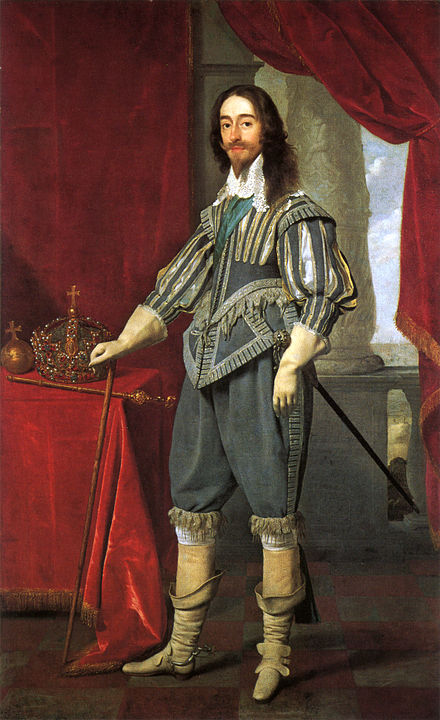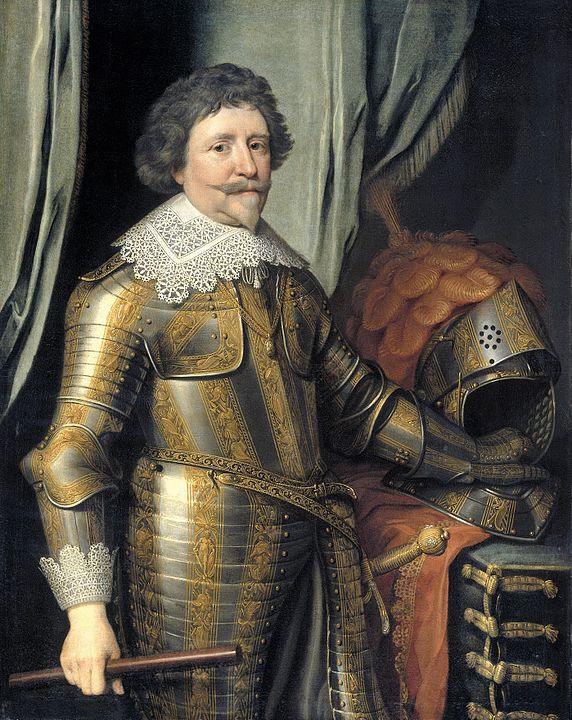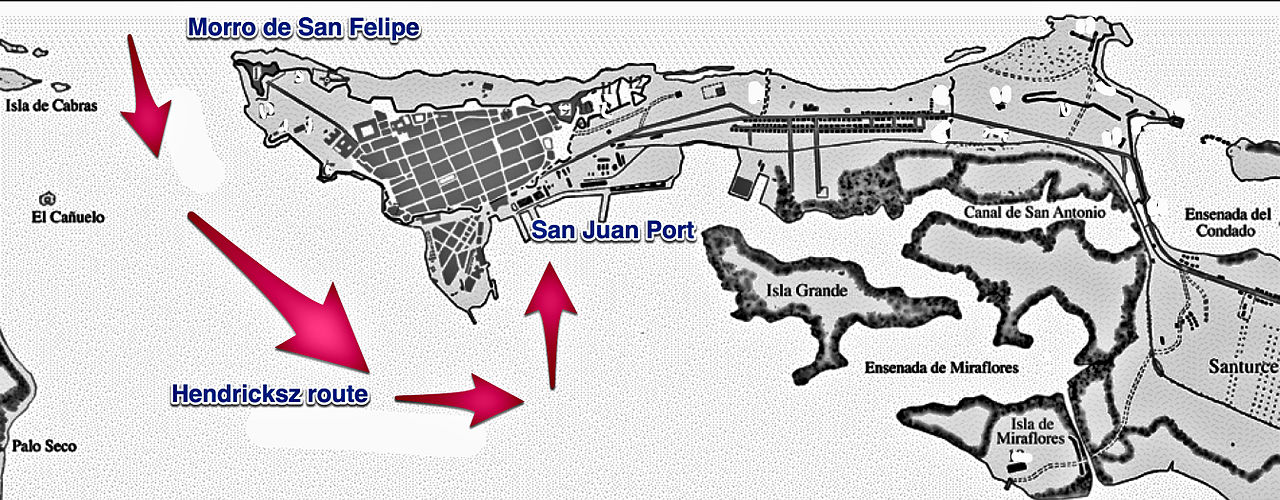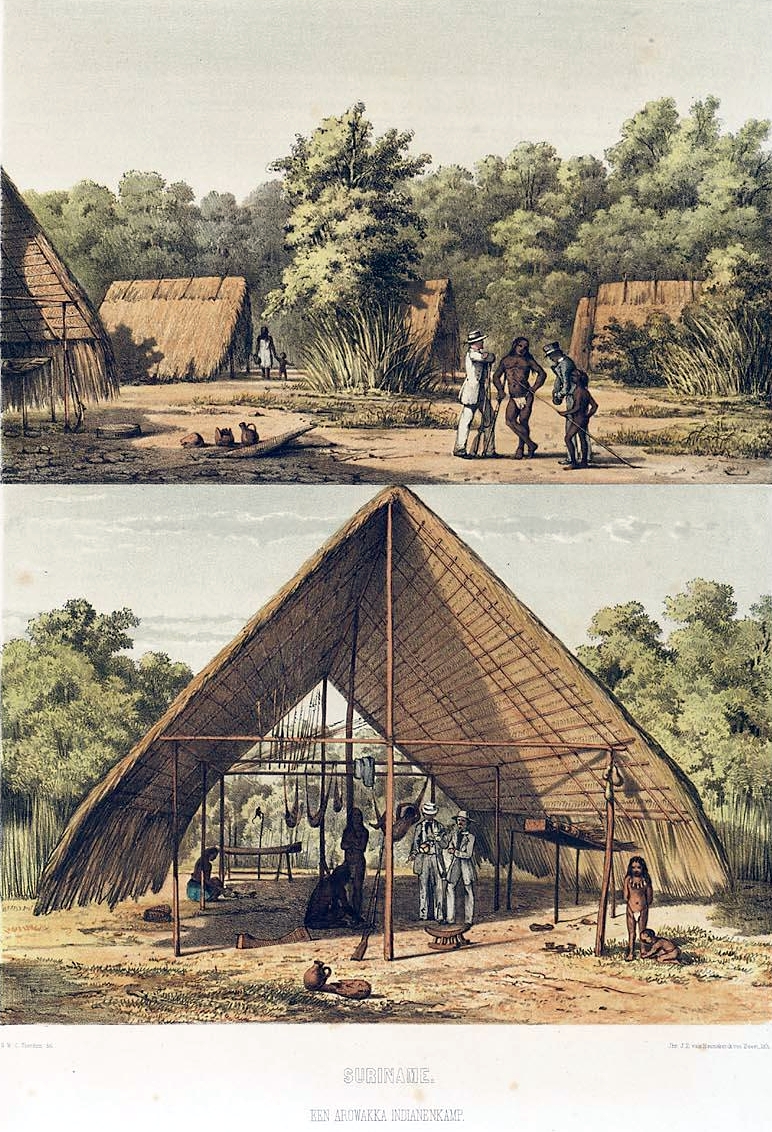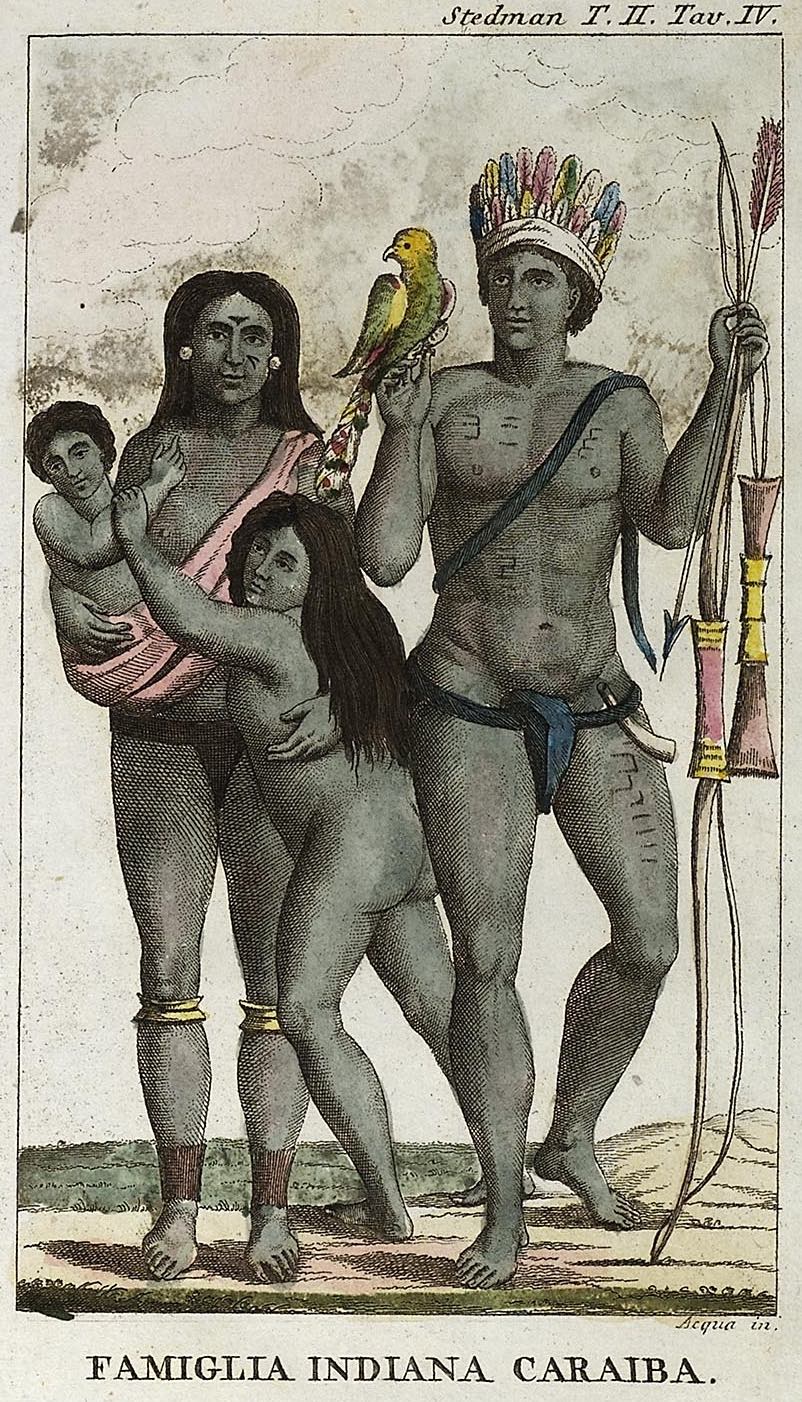1625 CE was a year of transition in England, where King James I died in late March, and Netherlands, where Prince/Stadtholder Maurice of Nassau died in late April. Maurice’s role had been foundational to the emergence of a coherent, separate polity in Netherlands.
In the months after these deaths, Dutch naval forces undertook serious assaults against Spanish/Portuguese outposts in San Juan (in today’s Puerto Rico), in Elmina (in today’s Ghana), and even– in alliance with English forces– against Cádiz itself. All those heavily armed probing missions failed, but they indicated that Maurice’s successor, his younger brother Frederick Henry, was determined to continue Maurice’s policy of poking the Spanish/Portuguese empire hard, whenever possible.
Meantime, in England the furore about the massacre the Dutch had carried out at Amboyna in the East Indies in 1623 continued… But another key story in British imperialism in 1625 was the launching by a wealthy linen merchant called William Courten of a project to colonize and exploit for his personal profit the West Indies island of Barbados. Over the years that followed, Barbados would become the location of the first of England’s large-scale and massively slave-powered sugar plantations.
There will be more on Courten, his likely personal involvement in the slave-trading business, and all these other stories below. But let’s start with these royal deaths.
James I of England dies; Charles I succeeds, launches attack on Spain
In 1603, James I came to the English throne, following the long reign of his cousin Elizabeth I. During most of Elizabeth’s reign, England’s finances were substantially reliant on continual inflows of wealth from the English pirate raiders who roamed the Atlantic and the North Sea, preying mainly on the Spanish ships hauling precious metals from the Americas back home to Spain. Elizabeth’s navy had also withstood one very large attempt (and two smaller attempts) by the Spanish Armada to invade England and topple her and any hint of her Protestantism from the country.
When James succeeded her, one of his earliest decisions was to sign a peace treaty with Spain. He also actively pursued the three key colonial projects she had launched: the implantation of Protestant English settlers in generally Catholic Ireland; supporting the organized armed trading/raiding venture in the Indian Ocean called the East India Company; and implantation of English settlers on the coast of North America.
English-WP tells us that, “In his later years, James suffered increasingly from arthritis, gout and kidney stones. He also lost his teeth and drank heavily. The king was often seriously ill during the last year of his life, leaving him an increasingly peripheral figure, rarely able to visit London.” He died on March 27.
He was succeeded by his 25-year-old son, Charles. During the last years of James’s life, James and Charles had both been eager for Charles to get engaged to the daughter of the previous King Philip III of Spain, sister to the recently crowned Philip IV. In 1623, Charles had even traveled incognito to Spain to try to persuade her to agree, in person. But she and her very Catholic family brusquely turned him down, astonished by the very idea.
His sense of humiliation at the hands of the Spanish helped motivate James and Charles to plan yet another English naval raid on the Spaniards’ main home naval base at Cádiz. This expeditionary force was not ready until after James had died, in October 1625. English-WP tells us here that it consisted of approximately 100 ships and a total of 15,000 seamen and soldiers. James and Charles had also built a tactical alliance with the Dutch for this raid: they agreed to send an additional 15 warships to help guard the English Channel in the absence of the main fleet.
It did not work out well. The English lost 7,000 men dead or captured, and 62 ships.
English-WP tells us of the political fallout in London:
The failure of the attack had serious political repercussions in England. Charles I, to protect his own dignity and his favourite, Buckingham, who should have at least made sure the ships were well supplied, made no effort to enquire about the failure of the expedition. He turned a blind eye but instead interested himself in the plight of the Huguenots of La Rochelle.
The House of Commons was less forgiving. The Parliament of 1626 began the process of impeachment against Buckingham. Eventually, Charles chose to dissolve Parliament rather than risk a successful impeachment.
(Hint: this will not be the last time Charles has trouble with Parliament.)
Maurice of Nassau dies
To be honest, I find the early history of the Netherlands fairly confusing but I shall try to make it clear here.
Maurice of Nassau (also, confusingly, sometimes called “Maurice, Prince of Orange”) was born in 1567 and was 14 when the seven mainly Protestant provinces of the Northern Netherlands declared their final secession from the Catholic Habsburg Empire, which was headed by the Spanish monarch. Maurice’s dad, William the Silent (also called William of Orange), had been one of the main architects and planners of the secession. He thought that in the monarchical environment that pervaded the whole of Europe in those days, the new polity needed to have a monarch–and even asked England’s Elizabeth if she wanted the role. But she turned them down and from 1587, Netherlands was effectively a republic, ruled by the “States General” who were the heads of the seven constituent provinces, known as Stadtholders.
William the Silent had already died in 1584. In 1585, Maurice succeeded him as Stadtholder of the provinces of Holland and Zeeland. Holland was easily the biggest and most powerful of the seven. Somehow over the years that followed Maurice had also acquired the offices of Stadtholder to four of the other five provinces. In all these cases, I think, he won this office because of his widely lauded military prowess, not through primogeniture. This remained very important for the Netherlanders because– apart from the “Twelve Years Truce” of 1609-21, their country remained locked in the war against Spain which had started in 1568 and would continue until 1648.
(William’s title of “Prince of Orange” went to his oldest son Philip William before it came to Maurice in 1618, presumably because PW had died? Also, PW was in jail in Spain until 1596.)
Maurice died in 1625 without any legitimate heirs (though quite a few “illegitimate” ones.) All but one of his six Stadtholder positions then passed– along with the princedom of Orange– to his younger half-brother Frederick Henry.
(The banner image at the head of this post is a portrait of many Nassaus. In the front row of riders are, left to right, Maurice, Philip William, and Frederick Henry.)
Dutch attacks against San Juan and Elmina
In 1625, the Dutch West India Company (GWC) had ordered the pirate-turned-admiral Boudewijn Hendricksz to go and relieve the embattled Dutch position at Bahia, Brazil, and allotted him 34 ships with good artillery and 6,500 men to do so. But they arrived too late in Bahia, so he turned around and decided to take the Spanish outpost at San Juan, instead. Once they arrived they were able to land and engaged in some very heavy battles before being repulsed by the small Spanish force there.
Hendricksz lost 400 of his men dead. He then sailed to a few other places in the Caribbean to try to keep poking the Spanish but without any significant success. When his much-diminished fleet arrived at Cabañas, in Cuba, he fell sick and died. His fleet returned to Holland, “and only 700 of the 1,500 men who had attacked Puerto Rico returned alive.”
In October 1625, across the Atlantic, another GWC fleet of 15 ships carried 1,200 soldiers to try to capture the important Portuguese slave-trading fortress at Elmina (in today’s Ghana.) The Dutch force was able to land. Then this:
The Dutch opened the battle by bombarding the castle. Then the Dutch began to march to the castle, but they were ambushed by the Portuguese and their African allies from hidden positions and were almost totally massacred. Among the dead were the commander-in-chief and all his officers. The Portuguese had very few casualties and took 15 flags, 15 drums, and more than 1,000 muskets, pikes, pistols, and dresses [probably, suits of armor or similar?].
The Dutch ships fired over 2,000 cannonballs at the castle before they withdrew.
The WP page on the battle says that the Dutch lost all of their soldiers except 45, while the Portuguese side suffered only 27 killed.
New English colonial project in Barbados
Until now, most of England’s overseas raiding/trading and colonial projects had been run by “Companies” of investors from London whose roots lay in the earlier, guild-like “Worshipful Companies” of merchants and so on. Hence, the East India Company, the Virginia Company, the Muscovy Company, and so on. In those cases, the monarch would issue to the Company in question (in return for a share of the profits) a license to monopolize all English exploitation of the land, trade-route, or market-area in question for, generally, a fixed term of seven years or so, which in many cases could be renewed and was in some cases made “permanent.”
The small (25 x 40 miles) Caribbean island of Barbados was different. In this case, a ship sole-owned by the London linen merchant William Courten had, in 1624 or so, “discovered” Barbados. In 1625, he sent out a few colonists to Barbados and neighboring islands, who arrived in May 1625. He also petitioned King Charles to grant him personal ownership and control of “all unknown land in the south part of the world, which he termed ‘Terra Australis Incognita’.” In 1627, he received letters-patent that gave him such a grant– but for a much reduced portion of the globe, namely Barbados and its neighboring islands.
Courten seems like an interesting figure. This WP page on him says: “William’s operations were not confined to his London business: he built ships and traded to Guinea, Portugal, Spain, and the West Indies. His fleet at one time numbered twenty vessels, with nearly five thousand sailors on board.” Given that list of trading ports, he was almost certainly engaged in slave-trading.
Because he “owned” Barbados, the other planters who came to exploit the land there were his tenants. However, his venture did not work out well. In 1630, WP continues:
James Hay, 1st Earl of Carlisle, disputed [Courten’s] grant, claiming, under deeds dated 2 July 1627 and 7 April 1628, to be owner of all the Caribbee islands lying between ten and twenty degrees of latitude, (Barbados itself situated at thirteen degrees). In 1629 Carlisle sent two ships, with Henry Hawley as his representative, to take possession of the island. On their arrival they imprisoned [Courten’s representative] Captain Powel, and established Lord Carlisle’s authority. The islands remained in Carlisle’s hands till 1646… Courten claimed to have lost £44,000 by these transactions, and left his descendants to claim compensation.
I will return to the story of the many atrocities the English committed on Barbados, in later years. Some of the first of these were committed against the island’s Native peoples. The WP page on Barbados tells us this about the peoples who were there in 1625: “The two main groups were the Arawaks from South America, who became dominant around 800–1200 AD, and the more war-like Kalinago (Island Caribs) who arrived from South America in the 12th–13th centuries.” (I am not sure how the editors there settled on “more war-like”.)
The distinguished Barbadian historian (and current VC of the University of the West Indies) Sir Hilary Beckles cites historian Michael Craton as estimating that, between 1492 and 1730, the native population of the Lesser Antilles island chain of which Barbados is a part “fell by as much as 90 percent.” (Beckles, BBD, p.24.)

